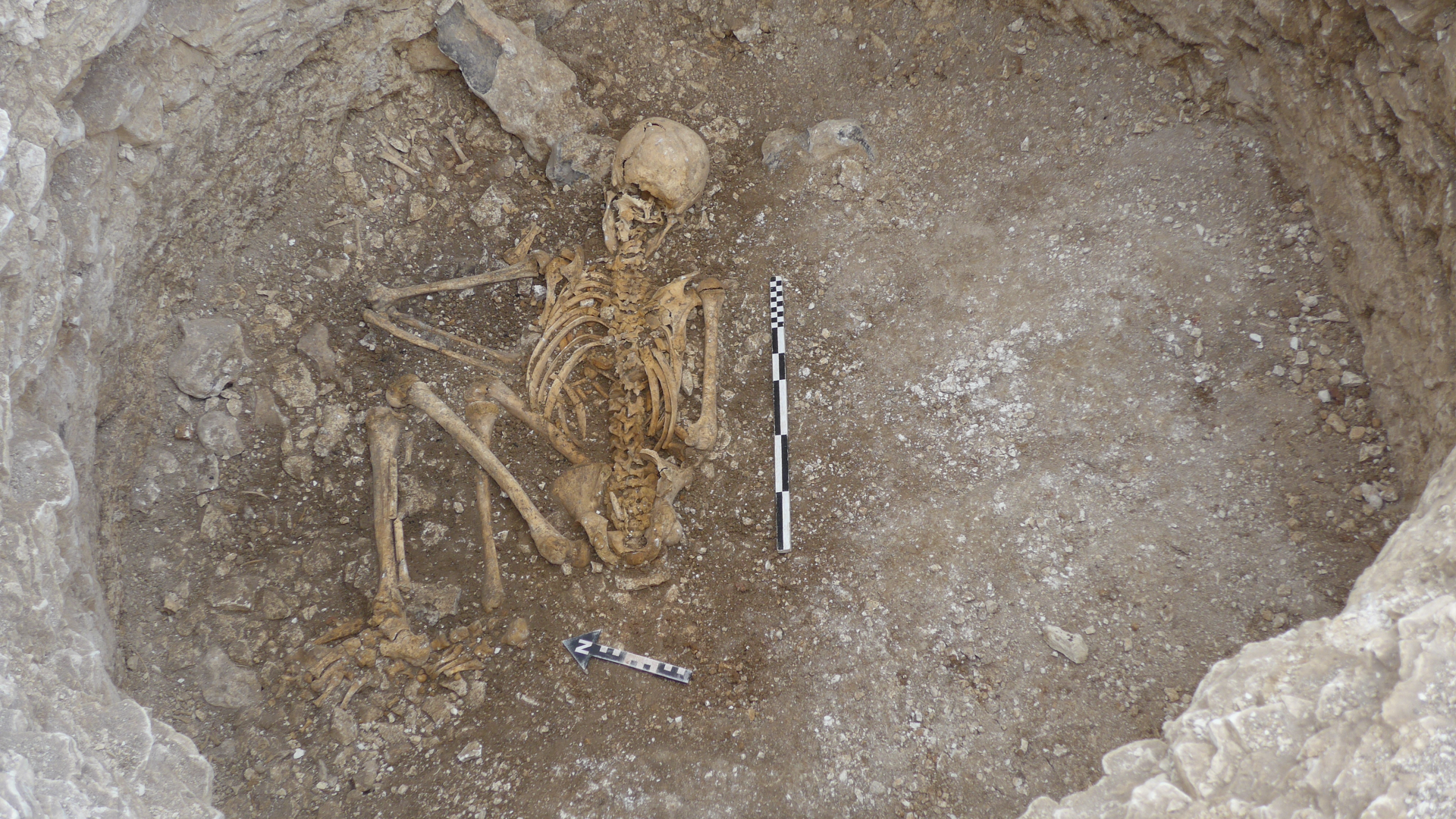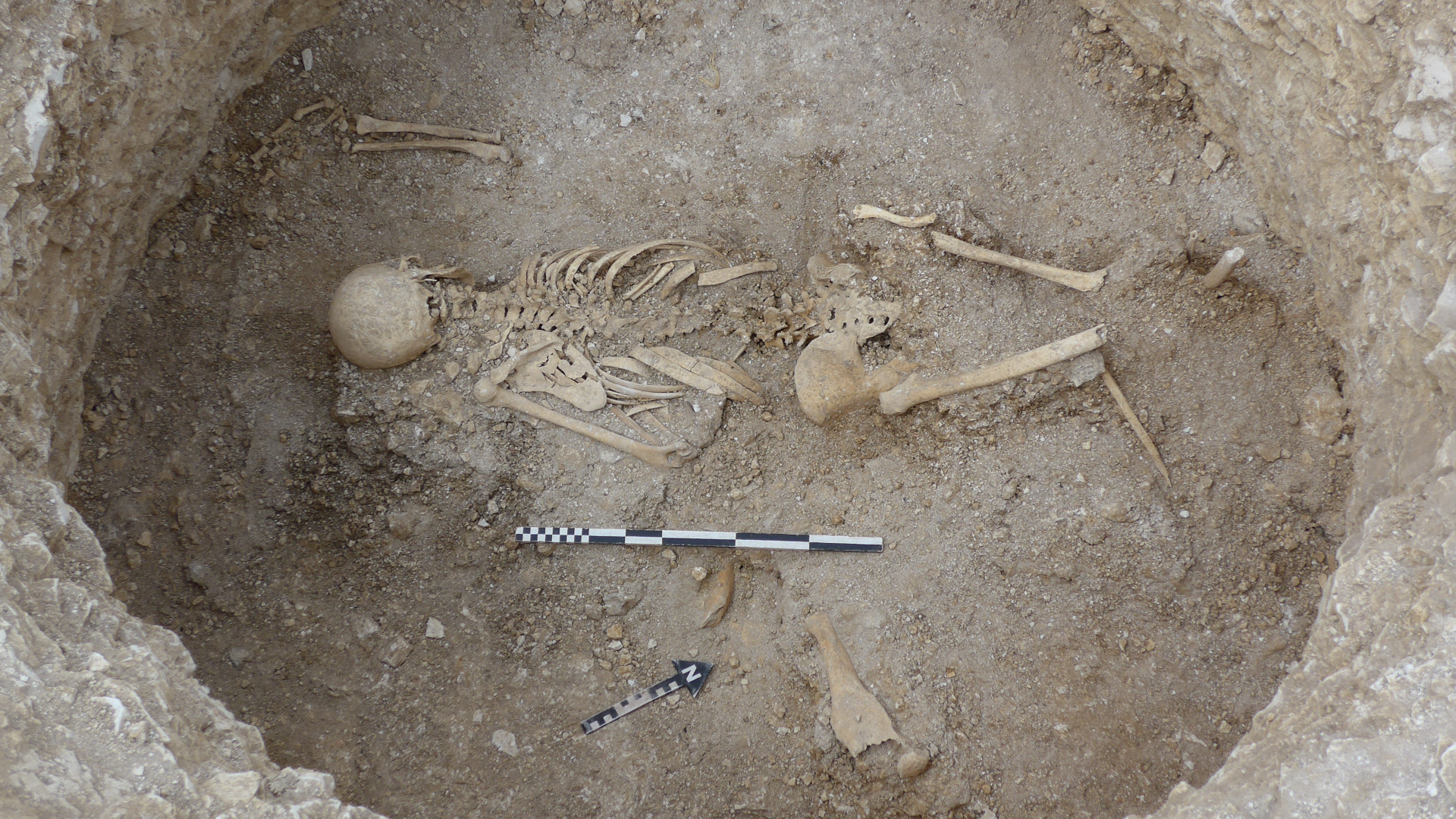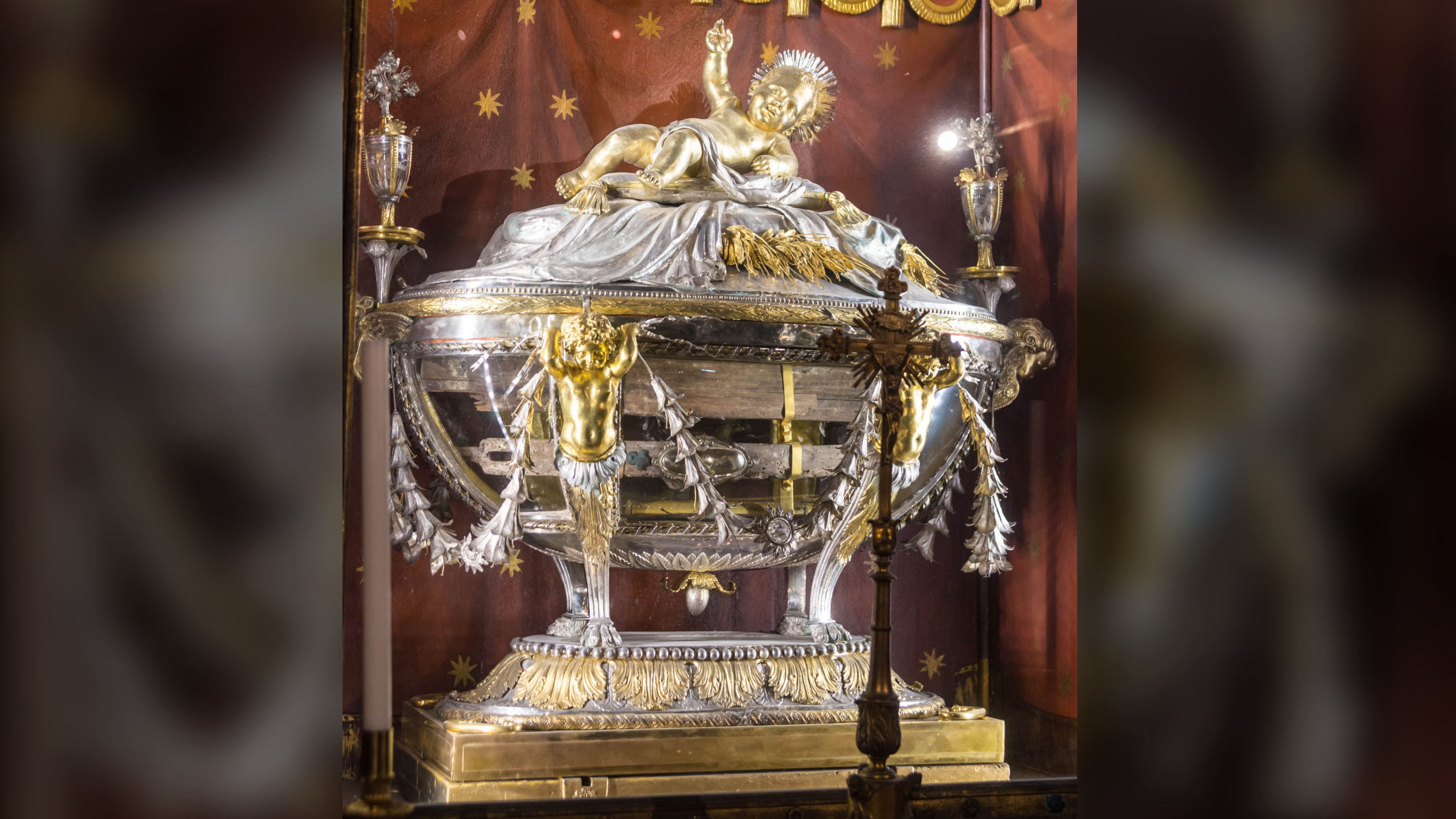2,000-year-old Celtic teenager may have been sacrificed and considered 'disposable'
Archaeologists have recovered three unusual burials of Celtic women and girls who may have been sacrificed in England.

Archaeologists in England have discovered the 2,000-year-old skeleton of a teenager lying face down in a pit — an unusual burial position that may be a clue in a murder mystery.
Researchers from Bournemouth University were excavating a Celtic site in Dorset, a county in southwest England, earlier this year when they stumbled upon the bizarre burial. The discovery happened during the filming of "Sandi Toksvig's Hidden Wonders," a new TV series hosted by broadcaster and comedian Sandi Toksvig, according to a statement from Bournemouth University.
"This has the sense of a body thrown into a pit, with hands potentially tied at the wrist" in front of her body, Miles Russell, the lead archaeologist for the project, told Live Science in an email. "We think she's a 'she', although we haven't had a chance to assess the DNA yet in order to clinch it."
The teenager had no grave goods and was found face down at the bottom of an abandoned pit. Combined with the evidence that her hands had been bound, those clues hint that she had been sacrificed by the Durotriges tribe, a Celtic group that lived in Britain during the Iron Age before the Romans invaded, Russell said.
And she's not the only likely murder victim at the site.
"The two other face-down bodies in pits we've recovered in the project were a teenage girl found in 2024," Russell said, "and one from 2010 of a young adult female" whose neck had been slashed.

These unusual burials have been recovered as part of Bournemouth University's Durotriges Project, which focuses on pre-Roman settlements in southern Britain. The cemetery appears to date to roughly the early to mid-first century B.C., about a century before the Romans successfully invaded southern England.
Get the world’s most fascinating discoveries delivered straight to your inbox.
In a study published earlier this year, researchers with the project used DNA analysis to show that Celtic groups such as the Durotriges were likely organized along maternal lines, which matched what Roman authors said about the Celts. It appears that men traveled to their wives' villages to marry, instead of the other way around.
Given the Celts' emphasis on maternal relationships, it's surprising that all three unusual burials may represent sacrificed women and girls.
Russell said these individuals may have been at the lower end of the social scale and considered more "disposable," especially if they were not from the area or were not related to the ruling families.
Although the sacrificed woman discovered in 2010 has already been analyzed, the sacrificed teenager found in 2024 and the teenager found this year have not been fully studied yet. Russell and his team plan to investigate both skeletons for possible signs of trauma and disease, as well as determine what the teenagers ate and where they came from.
The discovery of multiple female sacrifices suggests the practice was much more common than previously thought, Russell said, but "we are at a loss to know what socio-politico-environmental factors triggered the practice."
Celtic quiz: Test your knowledge about these fierce tribes once described by Julius Caesar

Kristina Killgrove is a staff writer at Live Science with a focus on archaeology and paleoanthropology news. Her articles have also appeared in venues such as Forbes, Smithsonian, and Mental Floss. Kristina holds a Ph.D. in biological anthropology and an M.A. in classical archaeology from the University of North Carolina, as well as a B.A. in Latin from the University of Virginia, and she was formerly a university professor and researcher. She has received awards from the Society for American Archaeology and the American Anthropological Association for her science writing.
You must confirm your public display name before commenting
Please logout and then login again, you will then be prompted to enter your display name.


